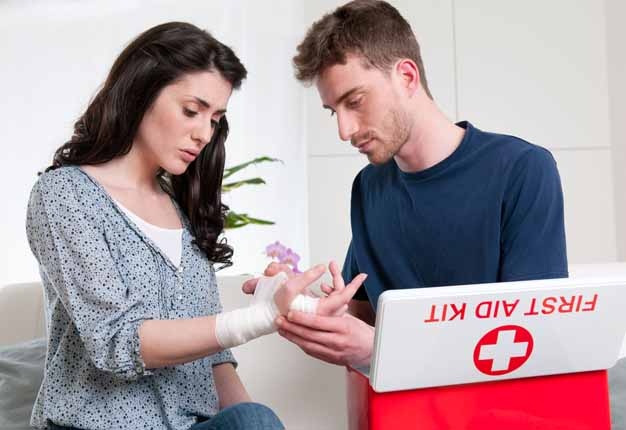
JOHANNESBURG, Gauteng - Drivers should always do their best to be prepared to respond to any emergency. Even though you may not be trained medical professionals there are often small bits of assistance one can provide with first-aid and an effective and fast response to smaller emergencies.
KEEP ONE IN THE CAR
Arrive Alive advises all drivers to travel with a first-aid kit in vehicles or have one readily available at home. This becomes especially important with small children picking up those nasty bumps, burns, cuts and bruises.
Many of us could do with some advice on what’s needed in such an emergency medical kit so Arrive Alive! approached road-safety partner ER24 with questions about emergency preparedness – and that emergency kit!
What would you regard as the most important requirements for an emergency medical kit with regards to size, design, materials etc.?
A first-aid kit should not be a hassle to take with you on holiday or keep in your vehicle. A good size is usually something that can fit comfortably into your cubby hole or one size larger that you keep in the boot of your vehicle. With regards to design, it should be something that is durable, preferably a bright colour so it can be easily identified and water resistant.
What would be the most important pieces of equipment / supplies in such an emergency medical kit?
Items to treat burn wounds, cuts, bruises, splint a fracture, band aids, scissor, tweezer, treatment for insect bites and stings as well as disinfectant. If you prefer to keep medicine in your first-aid kit, such as headache tablets, anti-nausea and vomiting, etc – it must be clearly marked and in a container that cannot be opened by small children. It is important that only a responsible adult make use of these medications and that no prescription medications are kept in the first-aid kit. Also do not administer your prescription medication to someone else, even if you use the same medication.
Would your emergency kit differ from the one you keep at home and the one you have in the car? Would you recommend that we have an emergency kit both at home and in our vehicles?
Generally the kit may differ in size, but the content stays the same. It is recommended to keep one in the vehicle as well as in the house / kitchen. It might be good to think of purchasing a small fire extinguisher for the kitchen and/or the boot of the car.
What would be the most important essentials to carry in a mini-kit when biking, etc in the outdoors?
Bandages, band aids and anti-septic solution. Sunblock would also be a good item to keep in your first-aid kit as well as after-sun lotion. The content of your first-aid kit largely depend on where you will be traveling to and what is most likely to happen. If you are a regular outdoorsman you would know what happened before and what you needed. You can pack this accordingly.
What are the most common mistakes the amateur tend to make when trying to perform first-aid?
Usually the first-aid kit is overstocked with items bought randomly at a pharmacy or outdoor shop. Be smart and keep the right things in your first-aid kit. The most important things are a CPR mouthpiece should you need to perform CPR, something to stop the bleeding and splint fractures. This includes band aids, bandages, dressings, strapping, gauze etc.
Probably the most important of all is MEDICAL GLOVES! Protect yourself before you try and help others. This should be in every first-aid kit, regardless if you intend to use it on your family or not.
Are there specific measures the amateur responder in an emergency should rather avoid and leave to the trained professionals?
If you are unsure contact ER24 on 084124 and ask for medical advice. Do not simply do something because you have seen it on television or saw a medic do it once.
How can one improve first-aid training knowledge – what can be taught in courses on first-aid training?
There are different first-aid courses that you can attend to learn the basics. From first-aid level I to level III and then there are friends and family CPR, etc. Some training academies offer a wilderness first-aid course and field side first-aid course for schools.
What should be in your first-aid kits:
• 2 First-aid dressing No. 5
• 2 First-aid dressing No. 3
• 2 Conform bandage 75mm x 4.5m
• 2 Conform bandage 50mm x 4.5m
• 2 Triangular bandage
• 10 plasters - single
• 1 Small child-safe scissors - metal
• 1 Forceps - metal
• 1 Safety pins 10’s
• 1 Antiseptic solution 100ml
• 1 CPR mouthpiece
• 2 Gloves per pair
• 2 Sterile gauze 75x75mm 5’s
• 1 Eno sachet
• 4 Alcohol Swab
• 1 Burn dressing 10x10cm
• 1 Paper tape 25mm x 3m
• 1 Rescue blanket
• 1 Plaster roll 25mm x 3m




 Publications
Publications
 Partners
Partners









